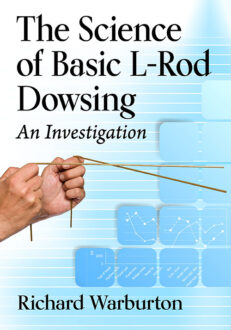The Science of Basic L-Rod Dowsing
An Investigation
$49.95
Available for pre-order / backorder
About the Book
Dowsing has been a known practice for at least 500 years, with some evidence suggesting it may have been used for millennia. Historically, dowsers used a forked, Y-shaped stick, following the movement toward the presence of water, minerals, or other objects located beneath the ground. Today, the most common tool used is a wire bent into the shape of an “L,” leading to the term L-rod dowsing. Only a few of dowsing’s many forms appear to have a clear physical basis, such that some physical phenomenon in the environment causes a physiological response in the body. Despite the many studies performed in the past, none have resulted in a comprehensive, testable explanation for how dowsing works.
This book reviews and critiques some of the common explanations for L-rod field dowsing, describes an investigation into various aspects of L-rod dowsing, and proposes a mechanism which explains the physical observations. Building on the prior scientific studies, it presents a theory based on well-known scientific principles for the physical component of dowsing.
About the Author(s)
Bibliographic Details
Richard Warburton
Format: softcover (7 x 10)
Pages:
Bibliographic Info: ca. 115 photos, appendix, notes, bibliography, index
Copyright Date: 2023
pISBN: 978-1-4766-9401-6
eISBN: 978-1-4766-5169-9
Imprint: McFarland





